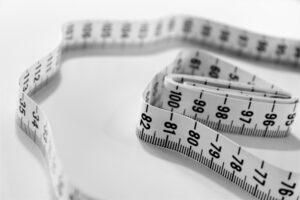
As you delve into the world of Pilates, you’ll encounter various equipment options, with the reformer and mat being the most common. Each offers unique benefits for practitioners, but you may wonder which one is more effective for weight loss. In this guide, we will explore the advantages of both the reformer and mat for weight loss, whether a mat is necessary for reformer Pilates, the key differences between the two, and the potential of Reformer Pilates for weight loss.
Is Pilates better on mat or reformer?
Both mat-based and Reformer Pilates are valuable for different reasons, and neither is inherently better than the other. The choice between mat and reformer largely depends on your preferences, fitness goals, and accessibility to equipment.
Mat-based Pilates is convenient, as it requires minimal equipment and can be performed anywhere with enough space. It focuses on bodyweight exercises, engaging the core, and improving flexibility. Mat Pilates can be an excellent option for those who prefer a simple and cost-effective approach to Pilates and enjoy the challenge of working against gravity.
On the other hand, the reformer offers a versatile and dynamic workout with the help of a spring-based resistance system. The reformer provides more support, making it ideal for individuals who may have physical limitations or need additional assistance during exercises. It allows for a greater range of movements and variations, offering increased opportunities for muscle toning and strengthening.
Ultimately, both mat and reformer Pilates can be effective for weight loss when practiced consistently and with proper form. Some practitioners prefer to combine both methods to enjoy the benefits of both approaches.
Do I need a mat for reformer Pilates?
In most Reformer Pilates classes or sessions, you don’t need a separate mat, as the reformer itself has a cushioned carriage that provides adequate padding and support. The carriage glides smoothly along the rails, and the springs provide resistance, making for a low-impact yet challenging workout.
However, some instructors might incorporate specific mat-based exercises or stretches into their Reformer Pilates routines to complement the reformer exercises. In such cases, they may provide mats for those exercises, but it’s always a good idea to check with your instructor or studio beforehand.
How is Reformer Pilates different from mat Pilates?
The primary difference between Reformer Pilates and mat Pilates lies in the equipment used and the exercises performed.
Mat-based Pilates relies solely on bodyweight exercises and uses the floor as the primary surface for performing movements. The focus is on building core strength, improving flexibility, and enhancing body awareness. Mat Pilates often involves exercises like the Hundred, Roll-Up, and Leg Circles, among others.
Reformer Pilates, on the other hand, utilizes a piece of equipment called the reformer, which consists of a carriage that glides back and forth on rails. The reformer has various spring settings that provide resistance for different exercises, making it a versatile apparatus for strengthening and toning the entire body. Reformer Pilates incorporates a broader range of exercises and allows for modifications to suit individual needs and fitness levels.
While both methods share the fundamental principles of Pilates, such as breathing, control, precision, and concentration, the reformer can offer added resistance and support, leading to a more challenging and dynamic workout.
Can you lose weight just doing Reformer Pilates?
Yes, you can certainly lose weight by practicing Reformer Pilates regularly and in combination with a balanced diet. Reformer Pilates offers numerous benefits for weight loss and overall fitness.
The resistance provided by the springs on the reformer creates muscle engagement and can lead to increased calorie burn and fat loss. Additionally, Reformer Pilates exercises often involve multiple muscle groups simultaneously, making for an efficient full-body workout.
Consistency and dedication to your Reformer Pilates practice are essential for achieving weight loss goals. Combining Reformer Pilates with other forms of exercise, such as cardiovascular workouts and strength training, can further support your weight loss journey.
In summary, both mat-based and Reformer Pilates offer valuable benefits for weight loss and overall well-being. The choice between the two depends on personal preferences and goals. Reformer Pilates can be particularly beneficial for individuals who appreciate added resistance and support during their workout. Whether you opt for mat or reformer, practicing Pilates consistently and complementing it with a balanced diet can contribute to successful weight loss and improved overall fitness.